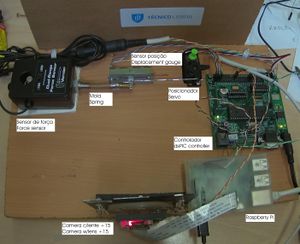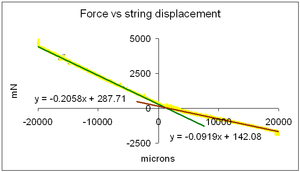Physical Pendulum
Experiment Description
A physical pendulum consists of a rigid body that undergoes fixed axis rotation about a fixed point. In the present case it has a rigid rod structure and a mass whose position can vary from mm up to.
The purpose of this experiment is to verify how the pendulum's motion varies with the length between the fulcrum and the mass position.
Links
- Video: rtsp://elabmc.ist.utl.pt/.sdp
- Laboratory: Basic in e-lab.ist.eu[1]
- Control room: Mola
- Grade: *
Experimental Apparatus
This control room allows to study the oscillations of a damped pendulum as well as to determine the constant of friction that acts on its oscillatory movement. The experiment allows the pendulum to be launched from different initial angular positions and it is possible to choose the length of the pendulum rod and the sample rate to an upper time of 10 s. At the top of the pendulum rod is attached a magnetic head of a conventional hard disk that allows determining the angular position of the pendulum as over time and inferre the velocity by calculating its differential.
The apparatus is composed by a servo motor capable of compress or extend a spring by means of a rod. The spring distension is exactly measured by a potentiometer while the force is detected by a pressure gauge on top of the spring.
The spring has 37.2 mm of which 10.0 mm are compressed windings (two sets of 14 windings). This means that the working length of the spring varies from 23.1 mm on compression to 32.4 on distension.
It is possible to choose the compression/expansion limits of the spring and the velocity to detect possible hysteresis effects.
Protocol
The user must specify the initial and final servo positions, the number of samples, the time interval between them and the number of cycles to execute (i.e. several compressions and/or distensions). This last option indirectly defines the speed at which the experiment occurs.

